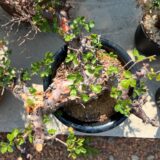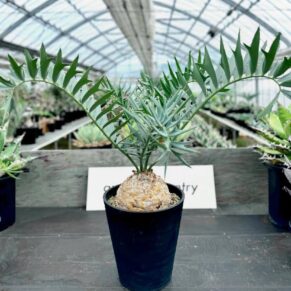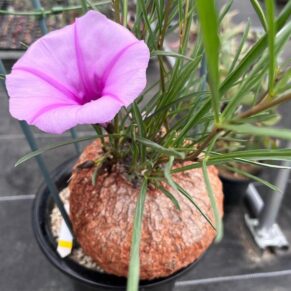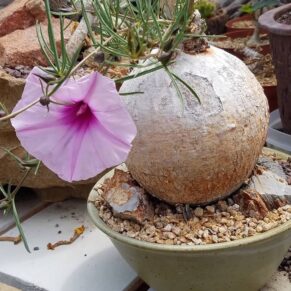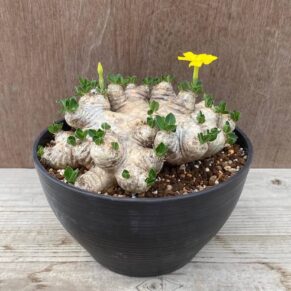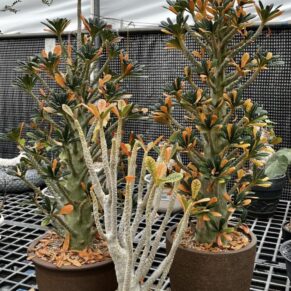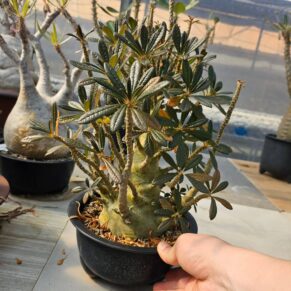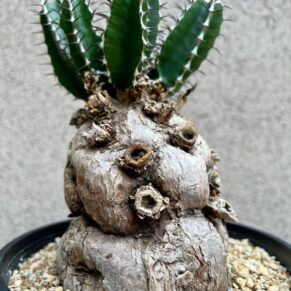- Your cart is empty
- Continue shopping
Shop
Othanna euphorbioides
$100.00
Explore the unique qualities of Othanna euphorbioides, a rare succulent known for its striking appearance and drought resistance. Learn about its habitat, care tips, and botanical significance.
Availability:7 in stock
Othanna euphorbioides
Certainly! Here’s a comprehensive, SEO-optimized guide on Othonna euphorbioides, structured in short, digestible paragraphs for readability and SEO purposes. This content is designed to provide in-depth information about the plant, incorporating the keyword naturally throughout.Facebook
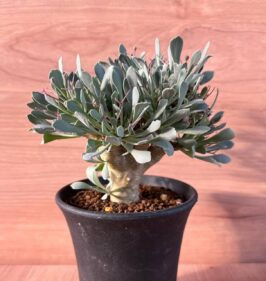
Othonna euphorbioides: A Comprehensive Guide to a Unique Succulent
Othonna euphorbioides is a distinctive succulent plant native to South Africa, celebrated for its unique appearance and resilience. Belonging to the Asteraceae family, this species is often admired by succulent enthusiasts and gardeners alike.Shop here
Botanical Classification
- Kingdom: Plantae
- Phylum: Angiosperms
- Class: Eudicots
- Order: Asterales
- Family: Asteraceae
- Genus: Othonna
- Species: Othonna euphorbioides
Native Habitat and Distribution
Othonna euphorbioides is indigenous to the Northern Cape region of South Africa, particularly in areas like Namaqualand. It thrives in steep cliffs and fissures within granite outcrops, often found in cracks on granite domes and exposed rock sheets on low ridges at elevations between 1,000 to 1,600 meters. citeturn0search0
Physical Characteristics
This plant is a small, deciduous shrublet, typically growing up to 150 mm in height. It features a short, swollen, succulent stem, up to 300 mm thick, covered with tough, peeling, yellowish-grey bark. The leaves are annual, succulent, and crowded at the branch tips, measuring up to 15 mm long and 30 mm wide, with a woolly texture in the axils. citeturn0search0
Unique Floral Display
Othonna euphorbioides produces yellow, daisy-like flowers that bloom during the winter months, from May to late July. The flowerheads are greenish-yellow and are borne in sub-umbellate clusters. citeturn0search0
Conservation Status
According to the South African National Biodiversity Institute (SANBI), Othonna euphorbioides is currently listed as a species of Least Concern. However, it faces threats from illegal collection for ornamental and horticultural purposes, leading to population decline. citeturn0search2
Ecological Significance
The fruits of Othonna euphorbioides are lightweight with a tuft of barbellate hairs, aiding wind dispersal. The plant is semi-deciduous, producing leaves in autumn and flowers in winter. Its thorny nature deters livestock grazing, but the plants are shallow-rooted and can be displaced by livestock movement. citeturn0search0
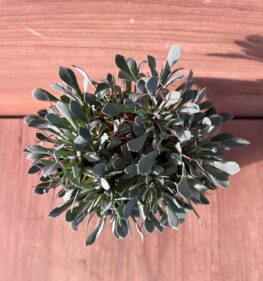
Cultivation and Care
Cultivating Othonna euphorbioides is relatively straightforward:
- Light: Requires full sun exposure for optimal growth.
- Soil: Prefers well-drained, sandy soil mixtures; incorporating pumice or small stones can enhance drainage.
- Watering: Regular watering is essential during spring and summer, ensuring the soil is dry before rewatering. Reduce watering during winter dormancy.
- Temperature: Sensitive to temperatures below 10°C; it’s advisable to bring the plant indoors during colder periods. citeturn0search1
Propagation Techniques
Propagation can be achieved through seeds or cuttings:
- Seeds: Sow in autumn in a sandy loam soil, maintaining high humidity and temperatures around 14°C. Germination typically occurs in about two weeks.
- Cuttings: Take cuttings in spring, allow them to dry and form a callus, then plant in a mixture of sand, soil, and pumice. citeturn0search1
Potential Threats
Beyond illegal collection, Othonna euphorbioides faces threats from habitat destruction and climate change. Conservation efforts are crucial to protect its natural habitats and ensure sustainable populations.

Conclusion
Othonna euphorbioides is a remarkable succulent that combines aesthetic appeal with ecological importance. Understanding its unique characteristics and requirements is essential for both conservation and cultivation. By providing appropriate care and supporting conservation initiatives, enthusiasts can enjoy this plant while contributing to its preservation.

